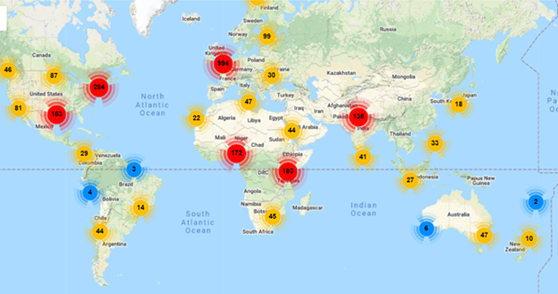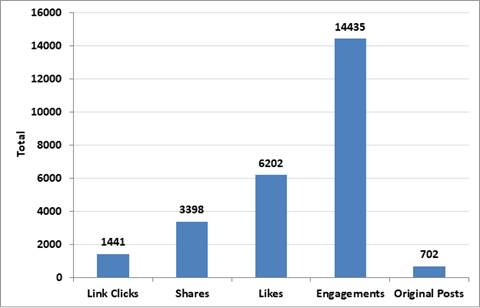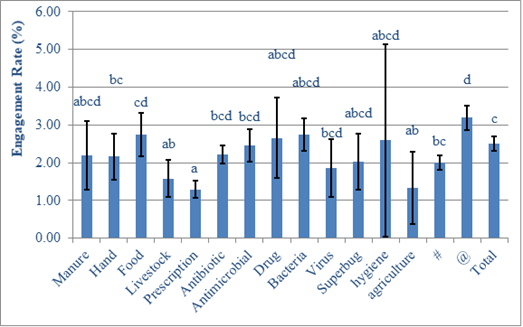Purpose
Antimicrobial resistant (AMR) infections are a significant threat to public health. That is why a nationwide coordinated effort among university outreach programs to convey science-based knowledge on AMR dynamics to stakeholders, was established using the moniker the iAMResponsible (iAMR) project in 2019. The project title, “iAMResponsible”, is intended to convey that everyone has an obligation to understand AMR and learn how they can adapt to using science-based practices to mitigate AMR and preserve the efficacy of antibiotics for future generations. The iAMR project seeks to cooperate with related efforts to leverage resources and amplify dissemination of AMR-related educational information. The objectives of the iAMR project are to: (i) increase nationwide capacity to develop AMR related educational content, (ii) facilitate the dissemination of research-based materials through a national network of project members and collaborators, (iii) effectively engage audiences of disparate backgrounds on a shared responsibility for AR, and (iv) empower behavioral change among different audience groups that preserves the efficacy of antibiotics. While the activities of the iAMR team are varied, this study assesses the network building and communication efforts of the iAMR Project on social media.
What Did We Do?
The use of social media to build communication capacity for AMR outreach was measured by the following metrics: total followers and frequency of keywords in search of follower profiles using tools from Followerwonk.com.
For this study the efficacy of social media dissemination was measured in the total impressions (number of users who saw a post) earned by outputs, and the geographical spread of follower locations. Both impressions and follower location are measured by native analytics tools available on various social media.
This study uses the engagement rate, provided by social media analytics to measure audience interest in published materials (engagement rate is the percentage of audience who saw the post and interacted with the post in some way–interactions include retweets, likes, link clicks, follows, media opens, etc.). Native (available from the social media platform) analytics data also allowed us to assess the relationship of engagement rate to specific message factors. To measure audience interest in specific topics, engagement rate was determined for tweets containing keywords and symbols.
To assess the use of social media for motivating behavioral change in the audience, the team developed a 20-question survey with questions on attitudes towards antibiotics, AMR, and the iAMR project. Beginning in the spring of 2020, the team has promoted the same survey annually on different social media platforms to determine attitude changes over time.
What Have We Learned?
Total following for iAMR social media accounts is now just over 4000 (4096 as of Feb 7, 2022). Looking at the most frequently appearing keywords appearing in follower profiles provides some insight into who the followers are (Figure 1). Preeminent among these keywords are “public health,” “antimicrobial resistance,” “infectious diseases,” and “PhD student.” Given this collection of terms we can infer that the iAMR audience likely has a strong interest in and awareness of public health threats like AMR. This would indicate that while iAMR has been effective at building a network among interested, engaged and knowledgeable people in scientific fields, but less adept in reaching audiences with little awareness of AMR or those working in agriculture or food safety fields.

iAMR posts have earned roughly 1,000,000 total impressions (948,266 as of Feb 7, 2022) on 720 total posts, or roughly 1300 impressions per post. Impressions measure only the times a user has seen a post they are not a measure of audience engagement. Therefore, while impressions function as a measure of dissemination they are not a reliable measure of the communication impact. In the examination of the geographical reach of iAMR followers (Figure 2) it is evident that iAMR has a larger international than domestic audience, with a particularly large node in Great Britain.

Overall engagement by audience members with posts from iAMR activity are illustrated in (Figure 3). For the 702 (as of Feb 7, 2022) posts iAMR generated roughly 21 engagements per post, of those engagements roughly 2 were link clicks, about 5 were shares, and 9 were likes. In the context of the per tweet average for impressions (1350) these numbers seem very low but in fact the overall engagement rate of 1.53% is above average (in 2020 average engagement was 0.07% on Twitter, 0.27% on Facebook, 1.16% on Instagram).

To examine what topics were of particular interest to the audience the engagement rate data was broken down by keywords contained in the body of iAMR’s posts, the mean engagement and 95% confidence interval for posts containing the keywords are illustrated in Figure 4. In this examination of user engagement based on post characteristics, the highest engagement was associated with posts containing an “@” symbol. Whereas users were less likely to engage with posts containing the words livestock, agriculture or prescription when compared to the overall engagement with iAMR’s posts.

Audience engagement with AMR attitude and behavior survey has been low and because most participants respond to only some of the survey questions of the 335 total responses which have been logged during the past 3 years, many key questions have response numbers as low as 9. As a result, we do not have enough data to statistically assess our survey results and present the following as results as instructional rather than conclusive (Table 1).
| 40% (n=40) | Have a medical, doctoral or veterinary degree. |
| 90% (n=51) | Expressed concern about growing AMR |
| 65% (n=63) | Said they regularly tell others about AMR. |
| 100% (n=23) | Said they considered iAMR a reliable source for information on AMR. |
Future Plans
Based on audience profiles and content engagement the iAMR account has done a poor job reaching agricultural audiences, or audiences not already engaged with AMR. Accordingly, future work will need to identify outlets, outside of social media, for engaging new-to-AMR audiences. However, there is value in cultivating the current account audience of engaged and expert users who could join the growing network of iAMR contributors and provide some level of expertise on outreach projects going forward. Moreover, survey results indicate that the current audience has developed trust in the iAMResponsible brand and the educational materials that the team has developed, which provides additional opportunities for dissemination of content into audience communication networks that might not be picked up by the analytical approach used in this assessment.
The iAMResponsible project team will continue efforts to identify educational needs, produce and curate research-based content intended to improve public awareness about AMR, and improve access among producers, consumers, and stakeholders to research-based information about potential AMR-related food safety risks
Authors
Mara Zelt, Research Technologist, University of Nebraska
Corresponding author email address
Additional authors
Juan Carlos Ramos Tanchez, Graduate Research Assistant, University of Nebraska; Amber Patterson, Extension Assistant, University of Nebraska; Amy Schmidt, Associate Professor, University of Nebraska
Additional Information
Acknowledgements
Funding for the iAMR Project was provided by USDA-NIFA Award Nos. 2017-68003-26497, 2018-68003-27467 and 2018-68003-27545. Any opinions, findings, conclusions, or recommendations expressed in this publication are those of the author(s) and do not necessarily reflect the view of the U.S. Department of Agriculture.

